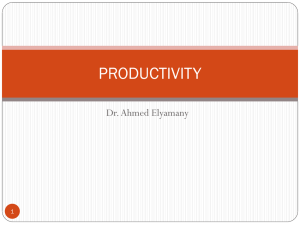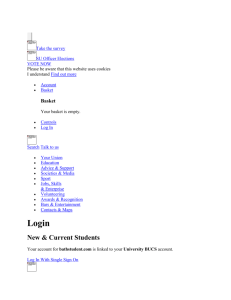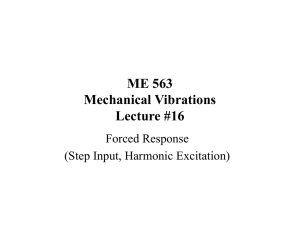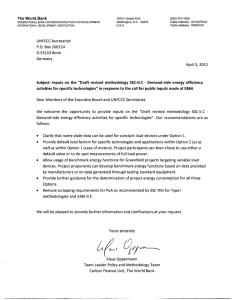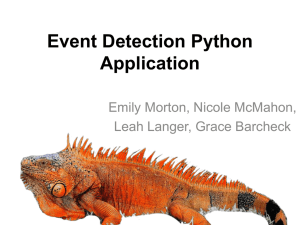IEOR 165 – Lecture 23 Affine Discrete Time Models 1 Definition
advertisement
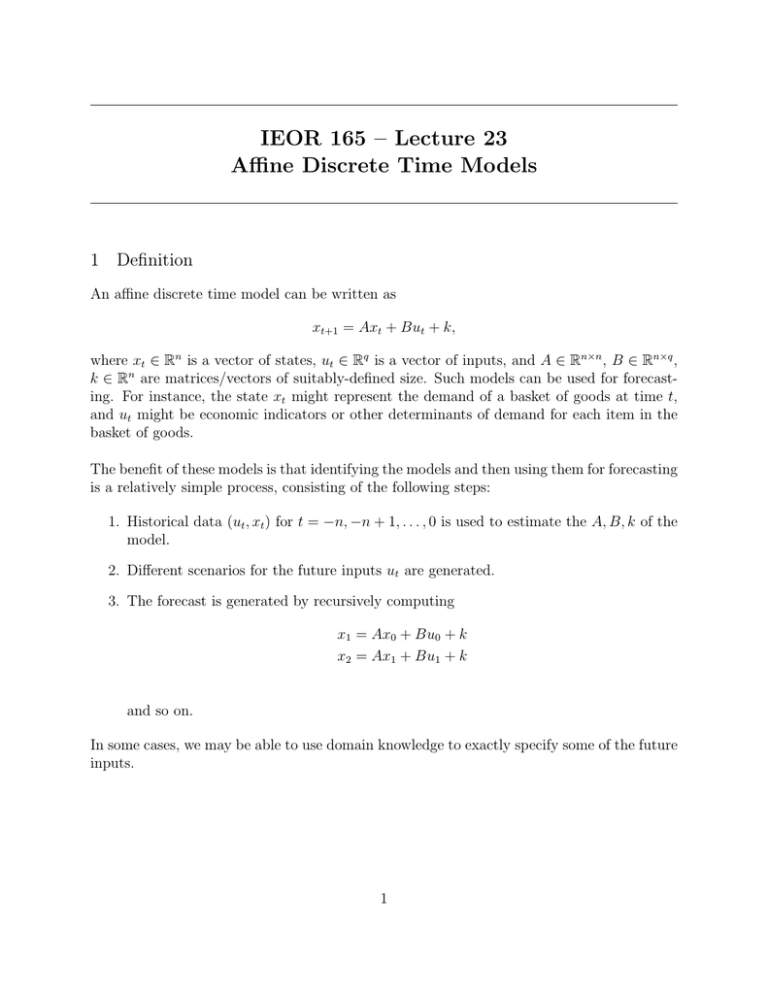
IEOR 165 – Lecture 23 Affine Discrete Time Models 1 Definition An affine discrete time model can be written as xt+1 = Axt + But + k, where xt ∈ Rn is a vector of states, ut ∈ Rq is a vector of inputs, and A ∈ Rn×n , B ∈ Rn×q , k ∈ Rn are matrices/vectors of suitably-defined size. Such models can be used for forecasting. For instance, the state xt might represent the demand of a basket of goods at time t, and ut might be economic indicators or other determinants of demand for each item in the basket of goods. The benefit of these models is that identifying the models and then using them for forecasting is a relatively simple process, consisting of the following steps: 1. Historical data (ut , xt ) for t = −n, −n + 1, . . . , 0 is used to estimate the A, B, k of the model. 2. Different scenarios for the future inputs ut are generated. 3. The forecast is generated by recursively computing x1 = Ax0 + Bu0 + k x2 = Ax1 + Bu1 + k and so on. In some cases, we may be able to use domain knowledge to exactly specify some of the future inputs. 1 2 Parameter Identification Identifying the A, B, k is relatively simple because we can pose the problem as a linear regression. In particular, if we let Aj , Bj , kj denote the j-th row of A, B, k respectively, then we can estimate the model parameters by solving the following least squares problems ′ 2 Âj Aj j B̂j = arg min Y − X Bj′ , kj′ 2 k̂j where we define x′−n u′−n 1 ′ x′ −n+1 u−n+1 1 X = .. . . ′ ′ x−1 u−1 1 j x−n+1 xj −n+2 Yj = . .. xj0 2






